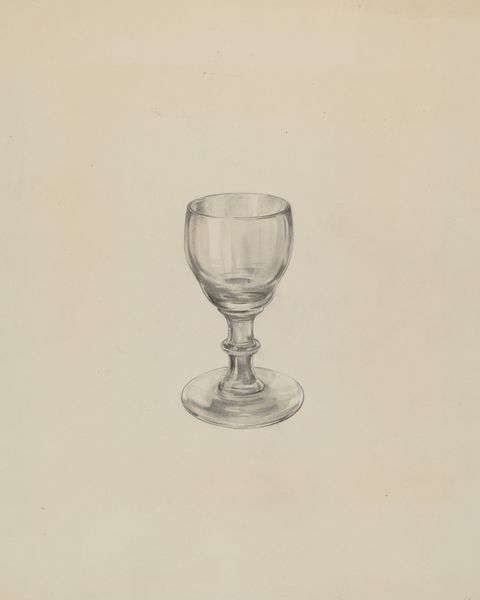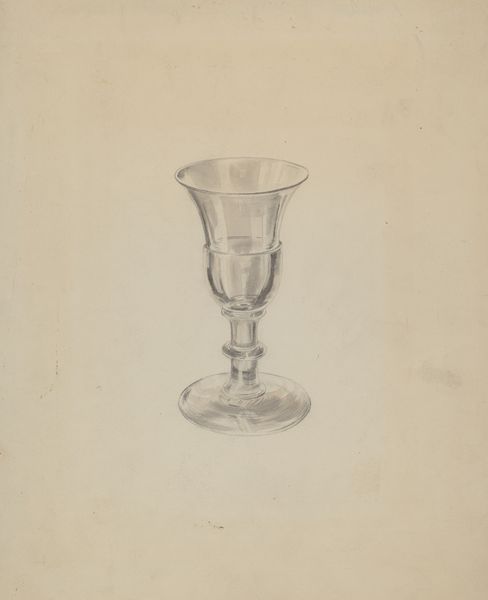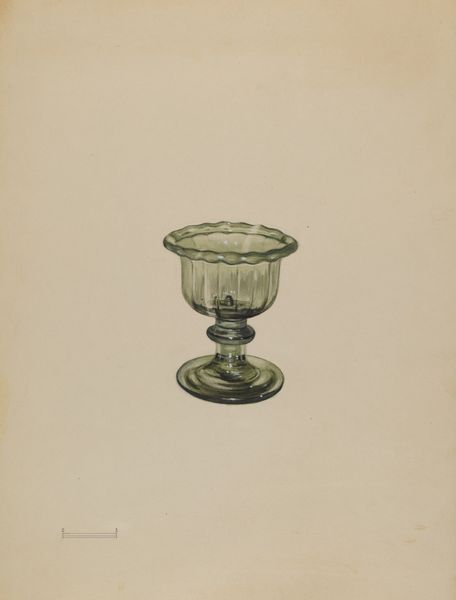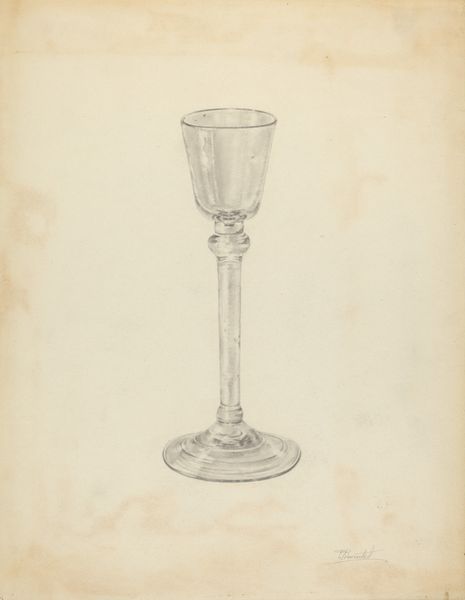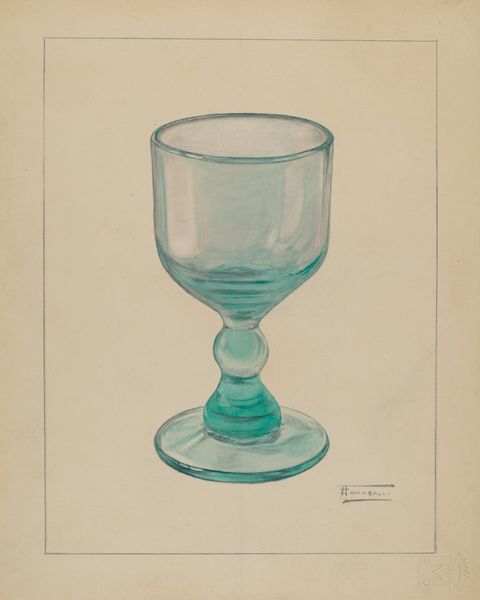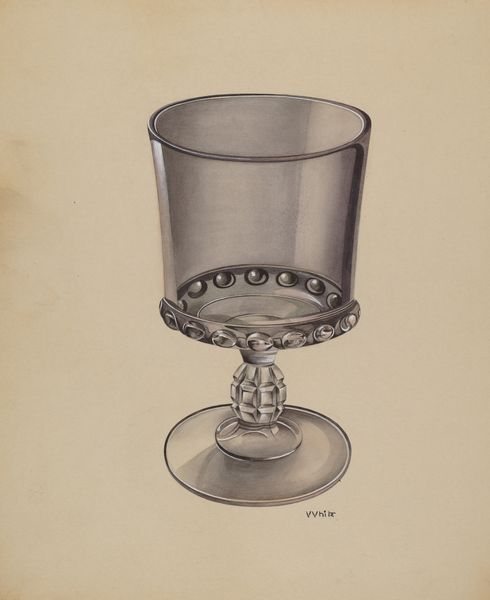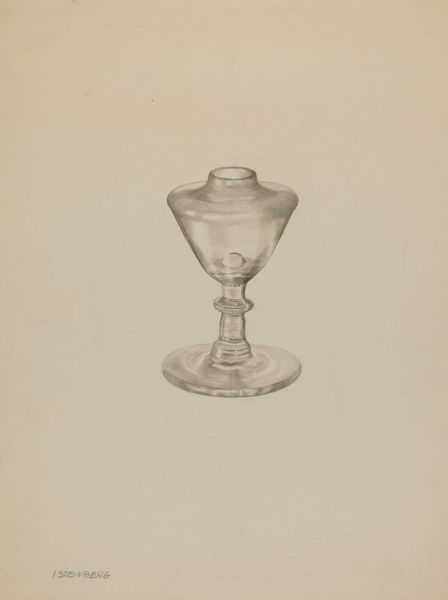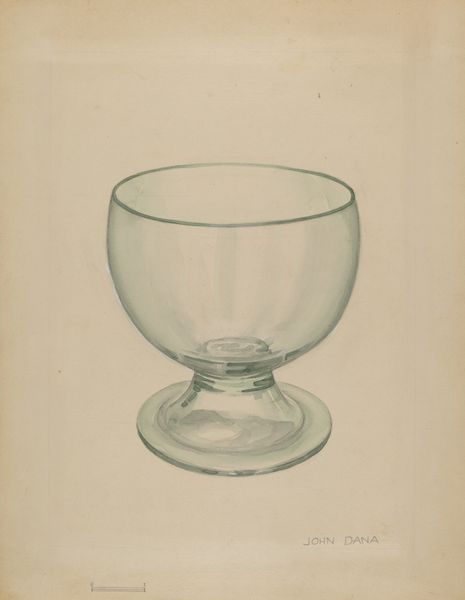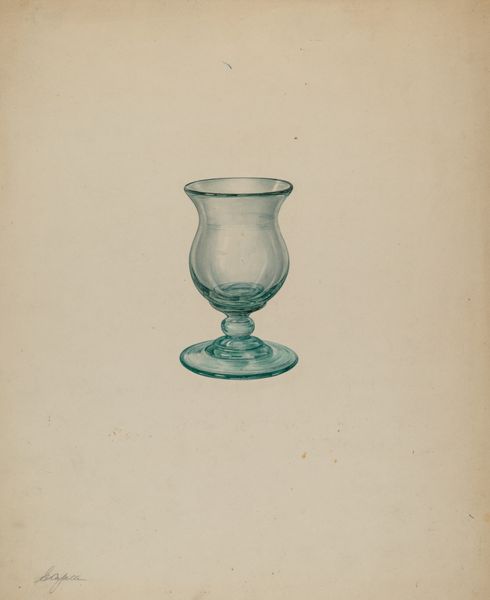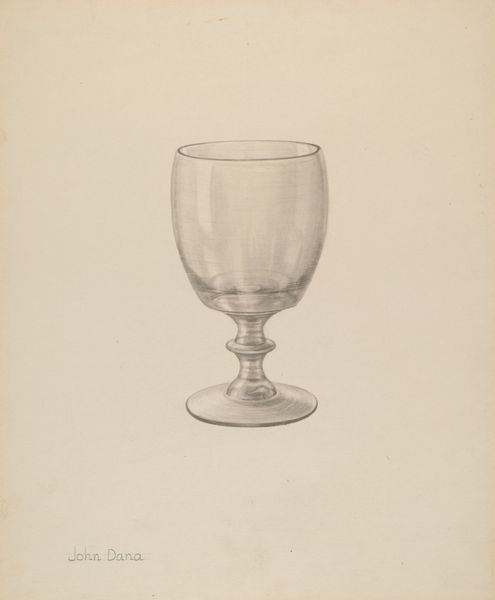
drawing, watercolor
#
drawing
#
caricature
#
watercolor
#
watercolour illustration
#
watercolor
#
realism
Dimensions: overall: 28.4 x 22.9 cm (11 3/16 x 9 in.)
Copyright: National Gallery of Art: CC0 1.0
Editor: So, we have Giacinto Capelli's "Salt Cellar" from around 1937, done with watercolor and drawing. It's a very straightforward depiction, almost clinical in its simplicity. What jumps out at you when you look at it? Curator: I see a confluence of aesthetic and social values being subtly presented. On one hand, there's the directness of Realism; the object is depicted plainly, as it is. On the other, the medium – watercolor, a "polite" art form – and the subject, an object of refined dining, place it firmly within the aspirations of a particular social class in the 1930s. Does this resonate with you at all? Editor: I see what you mean about the aspirational aspect. But I was initially thinking that its directness seems a bit removed from any sort of grandeur. Almost… prosaic. Curator: Perhaps. But isn't the valorization of the everyday, of functional design, itself a political statement? The period saw diverse approaches. Consider the Bauhaus movement, and how everyday objects were elevated through design. This piece exists, visually and conceptually, within that broader conversation of the value we ascribe to the objects around us. Do you think Capelli’s choice of salt cellar could reflect specific socioeconomic messages prevalent at that time? Editor: It could. Maybe its an object of domesticity, an ideal? Although now that I think about it, the cleanliness of the piece seems to sanitize the purpose. Curator: Exactly! And isn't that sanitation a form of idealization itself? A presentation of bourgeois order, perhaps? Editor: I didn't consider it that way. That's given me something to think about! Curator: Indeed. Art often reveals the quiet ideologies embedded in everyday life.
Comments
No comments
Be the first to comment and join the conversation on the ultimate creative platform.

